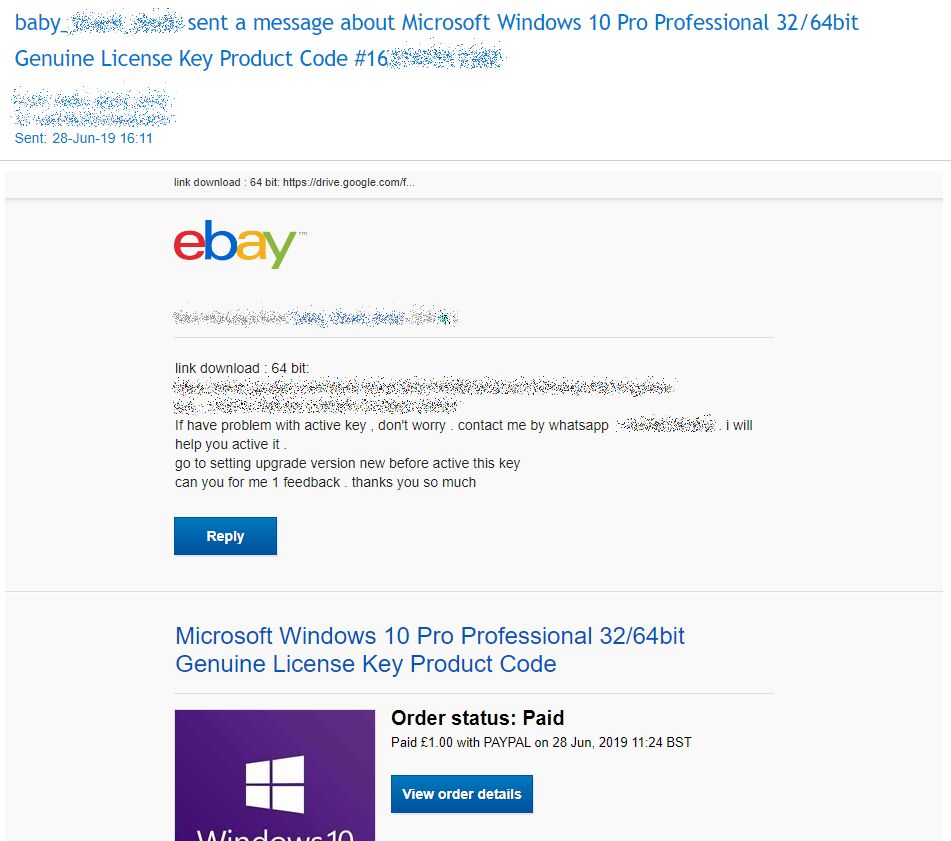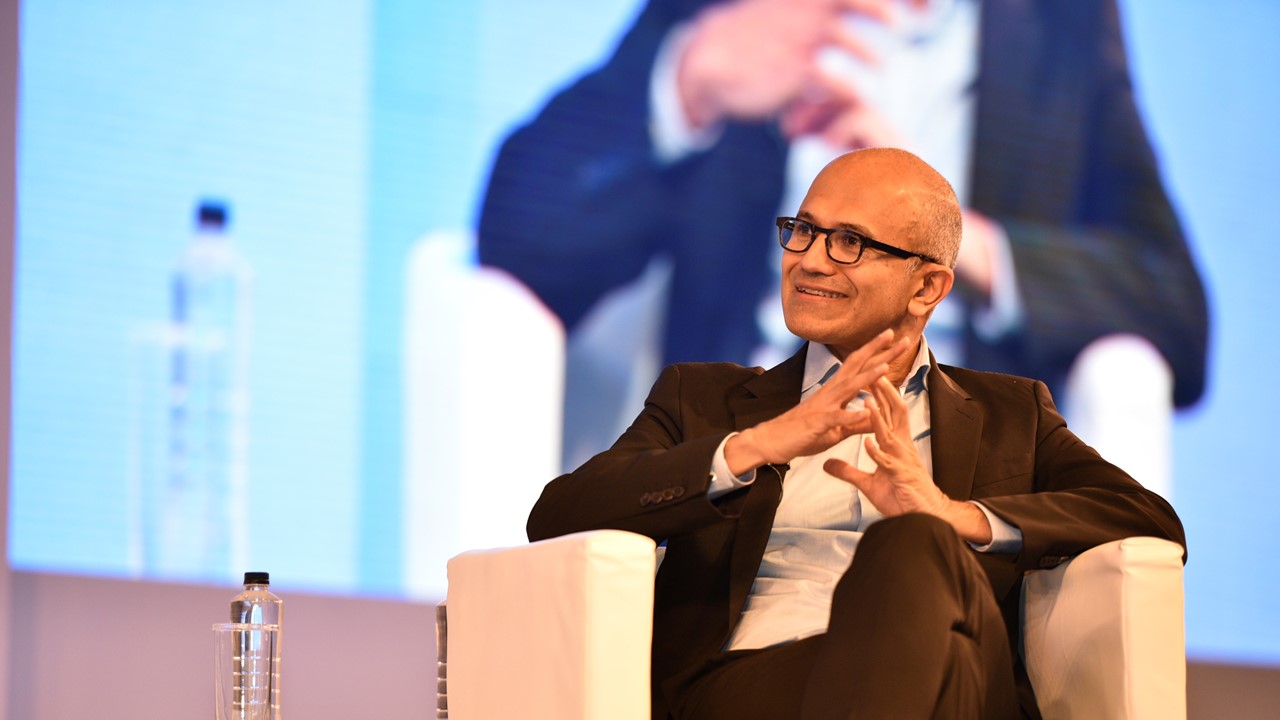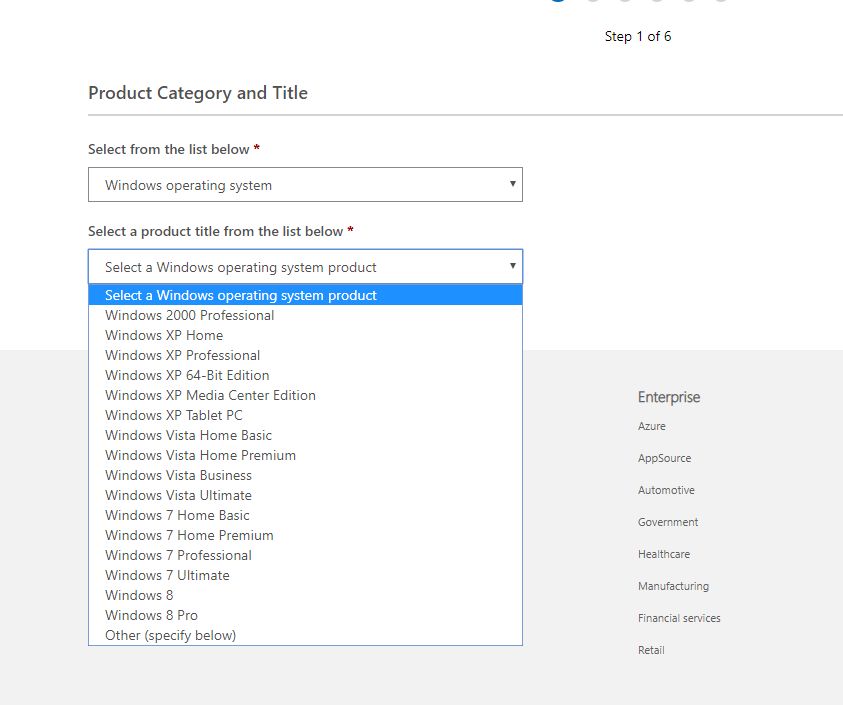Why Microsoft could be dropping the ball on software piracy
Microsoft seemingly no longer cares about piracy. But why?

Search for “cheap microsoft office” on Bing, Microsoft’s own search engine and you might be surprised to see what gets displayed. Outside the usual Microsoft adverts and search results are a bunch of websites all vying for your attention.
An advert pointing to Getmsoffice.com also offers a direct download button to Softwarekeep and is the most prominent one above the fold. The second organic result on the SERP (search engine results page) is for a website called softwareonlinedeal.com, the fourth is softwareproworld.com.

The common denominator of these websites? They all sell Microsoft Office for cheap, absurdly cheap. Softwareonlinedeal sells Microsoft Office Professional 2019 for $189.99 for a download and product key. Microsoft sells it online for $439.99 – that’s a near 57% discount.
But there’s even better (or worse depending where you stand). TechRadar has been able to find a working copy of Microsoft Office 365 for five devices and 5TB for Mac and PC for a grand total of £1.35 (about $1.68). In comparison, Office 365 Home with six users and 1TB storage each costs $99.99 per year; that’s a near 100% discount given the fact that you’re provided with a lifetime subscription; one that doesn’t expire.
At the time of writing, the vendor claimed to have sold more than 50,000 keys, although likely to have been under several accounts (the vendor we found had only about 540 keys available with less than 100 positive feedback registered).
You are provided with a login, password and sign-in URL via eBay’s message system. We were able to login and download Microsoft Office from what appeared to be the genuine backend of an Office 365 Education account (Office 365 A1 Plus for students).
Office is not the only Microsoft product that gets incredible discounts. We bought a Windows 10 Professional license key for £1; you get a key and a Google Drive link to download the right ISO. We didn’t download or install it but given that the vendor had plenty of good feedback, it's likely that it would have been a positive experience. You can even contact the seller by WhatsApp.
Sign up to the TechRadar Pro newsletter to get all the top news, opinion, features and guidance your business needs to succeed!

Ebay has, at the time of writing, hundreds of listings for extremely cheap Microsoft Office and Windows 10 licenses, openly available for sale. Clearly, this is piracy at an industrial scale that cost Microsoft tens if not hundreds of millions of dollars per year.
Microsoft’s stance on this is clear; “With the exception of Product Key Cards distributed with Certificates of Authenticity (COA’s), Microsoft does not distribute products keys as standalone products. If you see a listing on an auction site, online classified ad, or other online page advertising product keys, it’s a good indication that these keys are likely stolen or counterfeit”, says the relevant Microsoft page.
When we reached out to Microsoft’s PR team with our findings, the response was as follows: “We encourage customers to purchase genuine Windows and Office 365 from Microsoft or from one of our trusted partners. According to industry experts, use of pirated software, including non-genuine Windows and Office 365, results in a higher risk of malware, fraud public exposure of personal information, and a higher risk for poor performance or feature malfunctions.”
That is a less aggressive tone compared to the Microsoft of yesteryear that talked of the billions of dollars of potential revenue lost to piracy. What has changed then?
A new philosophy
Microsoft has matured after enduring some of its toughest years during the Ballmer years. Under the stewardship of Satya Nadella, the company regained a sense of purpose after a short mid-life crisis and emerged as a very different, more accommodating company. Integrating a Linux kernel into Windows 10 or embracing Android like its own operating system would have been seen as acts of heresy only a few years ago, and yet they happened.
Under this new CEO, hell froze several times while the company’s share prices rose from $37.50 to almost $138, becoming the only company with a trillion dollar market share and, perhaps more importantly, untarnished by the privacy morass that has proved to be more than a spot of bother for the GAFA quartet (Google, Apple, Facebook and Amazon).
Ironically, Microsoft is where it is because it failed to come up with a real alternative to Google’s Android and had to double down on businesses, public sector and enterprises. Not having to make money selling your user data was a powerful catalyst and a force of change for Microsoft. For the better, in the hindsight.
Nadella’s promotion - he was the Executive Vice-President of Cloud and Enterprise group - also meant that Microsoft’s transformation into a services-first company was only going to accelerate.

With business and the cloud as the absolute priorities, one might argue that software piracy amongst consumers was considered as being of lesser importance. We cannot and will probably never be able to prove this however, there are some hard-to-ignore evidences on which our conclusions are based.
Software piracy, as a theme, is seldom mentioned on Microsoft’s own website. The last major content piece on counterfeit software and fraudulent subscriptions dates from April 2018 and mentions the tens of thousands of people that report such practices to Microsoft every year.
Important anti-piracy documents no longer exist; Microsoft has abandoned initiatives such as play it safe, a global initiative launched in 2013 to bring awareness to issues related to software piracy and closed its intellectual property crimes newsroom.
It descends into the farcical though once you actually try to report counterfeit software on Microsoft’s website. The de-facto page is this one which appears in the 2018 blog post mentioned above. A quick look at what you can report leaves the astute observer with no doubt as to how old that page is.

The newest operating system mentioned there is Windows 8, which is two generations old. Ditto for Windows Server and Office (both from 2012). No mention of Windows 8.1, Windows 10, Office 2016 and other newer products. That is perhaps the most striking example of Microsoft’s apparently sloppy approach to tackling software piracy. But is it all bad?
When software is no longer software
Microsoft built its success on lines of codes stored locally but it is building its future on lines of code secured in data centers. The concept of software piracy is fast becoming as obsolete as the concept of using a piece of software without connectivity. Microsoft is not alone in doing that; software-as-a-service or subscription is fuelling the growth of Adobe, Bitdefender and the likes.
Perpetual software licenses will likely be an anachronism within a decade and perhaps, no proof is more powerful than the vanishing search volume for the word “crackz” which refers to software used to crack copyright protected software. By 2014, a decade after the term reached its peak, it had all but disappeared. SaaS is subscription and you can’t crack that.
There’s a massive loophole though, especially when it comes to Microsoft software. Windows 10 licenses - essentially a string of alphanumeric characters - are widely available, more often than not because businesses purchased computers that are then decommissioned (although there’s a myriad of other reasons - MSDN/OEM/Volume Key).
They will all, sooner or later, have to contact Microsoft servers for activation and to get features or security updates. The same goes for Microsoft Office 365; the ones on sale are often educational licenses that are usually free in the UK and in the US if you are a student or have children who attend school. Vendors selling these licenses are openly flouting the terms and conditions much to the chagrin of legitimate Microsoft resellers.
Perversely, it creates confusion amongst users: a post on popular UK deals forum, Hotukdeals, summarizes it perfectly. “I buy a Windows key from the biggest store front on the net, I pay for it with my PayPal account connected to my credit card, I put it on my computer connected to my internet and my IP address, I then use said internet connection to activate said key on Microsoft's servers. If it activates, then it's legal”. That comment was upvoted several times, meaning that readers mostly agreed with it.
So why isn’t Microsoft cracking down on piracy as it used to?
One explanation could be that Google, with ChromeOS and G Suite, is a small but growing threat in a world where consumer technology often permeates into businesses. Pirated content could be seen as a proxy or a buffer, a way of doing guerrilla marketing to prevent others (Libreoffice anyone?) from winning hearts and minds.
Another way of putting it is one extra Office 365 user usually means one fewer G Suite one. For Windows 10 though, it is probably more a case of encouraging users to move from Windows 7 and Windows 8.1 (which still account for around 40% of the global desktop market share) can only help.
This brings us to this conclusion: Microsoft must be seen to be growing in absolute numbers as this helps the business case (and share price).
Back in 2015, Microsoft revealed its ambitions to reach the lofty goal of one billion Windows 10 users by 2018. Within 12 months, it was clear that was never going to happen. Windows 10 Mobile vanished, leaving it to get these users exclusively from mobile devices (not including Hololens).
And while Windows 10 was not mentioned at all during the last three earnings release, the revenue generated from Windows OEM has increased during each quarter. There were 600m MAU (monthly active users) in November 2017, 700m by June 2018 and reaching 800m by March 2019. The impending Windows 7 End of Support on January 2020 will likely to be a catalyst for enterprises and for consumers as well.
A special kind of freemium
Microsoft’s attitude to piracy can therefore be interpreted as a tacit acknowledgement of its usefulness as a marketing tool. Cracking too hard on it could be bad publicity and Microsoft could always start turning the screws should Windows or Office revenues start to dwindle.
Doing so will likely to drive users of counterfeit software in the arms of Google, not something desirable in the short term. Gazing at our crystal ball, we can see that “Windows 365” and “Microsoft 365” will run almost entirely as subscriptions and that, like Adobe with Photoshop, there will be a time where you won’t be able to buy or use any Microsoft product on a perpetual license and without web connectivity.
There have been reports of Windows 10 and Office 365 users of counterfeit software that have lost access to their services altogether so it looks like there are random, rather than systematic, anti-piracy measures that take place from time to time. After all, even back in 2007, it used data provided by its Windows Genuine Advantage (WGA) software to help bring down a counterfeiting ring in China.
- These are the best Microsoft Office 365 deals

Désiré has been musing and writing about technology during a career spanning four decades. He dabbled in website builders and web hosting when DHTML and frames were in vogue and started narrating about the impact of technology on society just before the start of the Y2K hysteria at the turn of the last millennium.